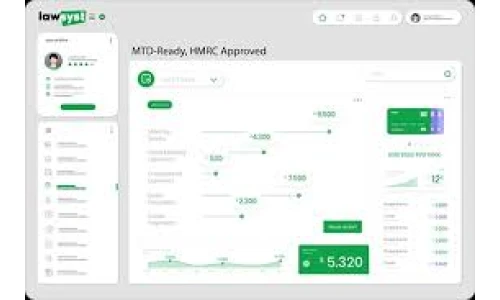Lawsyst: a specialist case management system for asylum and immigration in the uk
Asylum and immigration work places intense demands on case teams: large volumes of documentary evidence, complex timelines, frequent hearings and appeals, interpreter coordination, and the constant need to satisfy Legal Aid Agency (LAA) rules for funding and billing. For practices that rely heavily on legal aid, the software you use for case management becomes a compliance tool as much as a productivity tool. Lawsyst is a case management system designed with UK legal-aid workflows in mind. In this post I explain the features that matter for asylum and immigration teams, why legal-aid billing accuracy should be your top selection criterion, and how Lawsyst’s design reduces billing errors, speeds submission and helps firms defend costs at assessment.
Why billing accuracy matters in asylum and immigration work
Legal-aid billing is not simply an administrative afterthought; it is central to a firm’s viability when substantial portions of income are funded through the LAA. Asylum and immigration cases often include many disbursements (interpreters, country-of-origin reports, medical experts), multi-stage hearings and transfers of certificate responsibility. A single misdated certificate, a mis-coded disbursement, or a missing prior authority can lead to delayed payment, partial rejection, clawback or a formal query that eats staff time and cashflow. For this reason, case management systems that streamline how certificate data, disbursements and counsel invoices are recorded materially reduce commercial risk.
Core features a legal-aid focused cms must deliver
To be genuinely helpful for asylum and immigration teams, a CMS must do more than store documents. At minimum it should:
• map directly to LAA billing codes and certificate fields so exports match the LAA’s expectations;
• make it simple to populate certificate data once and reuse it across all related matter records;
• record and attach disbursement invoices, interpreter confirmations and proof of payment in a way that is easy to present at assessment;
• support prior-authority workflows and authorisation trails so retrospective disputes are minimised;
• enable batch billing and bulk export for high-volume caseloads; and
• keep detailed audit logs (who changed what and when) to defend against queries.
Lawsyst’s approach: built around legal-aid workflows
Lawsyst has been developed to reflect the realities of UK legal-aid practice. Rather than being a generic, country-agnostic platform retrofitted for legal aid, the system’s data model, export formats and user flows are designed to mirror LAA expectations. This design choice addresses several recurring failure modes in billing:
• duplication and inconsistent certificate data — Lawsyst centralises certificate and means/merits fields so the same data feeds claims, letters and billing exports, reducing transcription errors;
• mis-coded disbursements — pre-configured disbursement types and required evidence fields make it harder for teams to misclassify costs;
• missing prior authority paperwork — the system routes PA requests and stores approvals in a single place linked to the claim so assessors see the authorisation trail;
• poor evidence linking — invoices, interpreter confirmations and receipts are attached to the same disbursement record so a reviewer does not have to patch together files from multiple folders.
In practice: how lawsyst reduces billing errors and speeds payment
From the day a matter is opened through to final billing, Lawsyst reduces the number of manual touchpoints where human error can slip in. Examples include:
• one-time certificate capture — create the certificate once, reuse it across forms, batch exports and correspondence; any update flows through the matter automatically;
• auto-coded billing lines — when time or disbursement entries are created, the system suggests LAA codes and descriptions that match common claim lines; users can see immediately if an entry requires prior authority;
• disbursement checklist — each non-staff cost has a checklist (invoice, proof of payment, supplier VAT information, file note explaining necessity) before it is eligible for POA or final claim;
• batch export and validation — before creating the final export, Lawsyst runs validations and flags common LAA triggers (missing certificate date, inconsistent client ID, unlinked disbursement), so problems can be fixed before submission.
these workflows matter for asylum and immigration because disbursements are frequent and contested. When an LAA assessor wants to see why a translation cost was necessary or whether an interpreter was booked and paid, having a single clickable trail from bill line to invoice to booking confirmation is a defensible advantage.
Governance, audit logs and staff accountability
A frequent source of LAA queries is “who changed what and why.” Lawsyst records granular audit trails for critical fields: certificate amendments, prior authority approvals, POA draws and disbursement payments. This not only helps in responding to LAA audits but supports internal governance: compliance teams can run regular reports on certificate amendments, high-value disbursements, and matters drawing multiple POAs. These reports enable early intervention where a matter may be drifting into unsustainable cost levels.
Integration with accounting and reconciliation workflows
End-to-end accuracy requires that matter data and ledger entries reconcile. Lawsyst integrates with common practice accounting modules so POAs, interim payments and final bill receipts reconcile against the matter. Reconciliation automation reduces manual journal errors and ensures that what is claimed in CCMS matches what sits on the firm’s accounts — a frequent point of mismatch during assessments.
User experience: designed for busy caseworkers and duty teams
Asylum and immigration teams are often working under tight deadlines with multiple hearings. Lawsyst’s user flows emphasise quick capture (pre-filled fields, templates for recurring letters and bundle index generation) so caseworkers spend less time on administration and more on verifying that every disbursement is evidenced and coded correctly. The quicker the correct data is captured, the lower the risk of late submissions or incomplete claims.
Handling prior authorities and complex approvals
Prior authority (PA) is a recurring pain point: numerous expert fees or specialist reports require pre-approval, and retrospective approvals are risky. Lawsyst’s PA workflow is designed to capture the business case, attach CVs and cost estimates, route for internal approval, and then store the LAA decision. Because the PA record is linked to the disbursement and matter, the final claim can show a clear trail of necessity and approval — which is precisely what assessors look for.
Reporting and management information for cashflow control
Legal aid firms cannot afford surprises. Lawsyst provides dashboards and reports that surface: matters without certificates, matters with successive POAs, outstanding disbursements older than X days, and projected claim timings. By flagging matters that need invoice chasing or authorisation, the system helps practice managers preserve cashflow and reduces the need for reactive hardship applications.
Training, onboarding and vendor support considerations
A specialist system is only as effective as its deployment. Lawsyst packages onboarding that focuses on LAA workflows: how to capture certificates, how to route PA requests, and how to create validated exports. Because the product targets the legal-aid market, onboarding concentrates on the few high-risk actions that generate rejectable claims. For firms migrating from generalist platforms, this targeted training shortens the “time to compliant billing” compared with larger, more generic systems.
Limitations and where to be cautious
No system removes the need for good process. Firms should not rely purely on software rules to ensure compliance. Common cautions include:
• validate exports with a short pilot of live matters before full migration;
• retain a human final check for high-value disbursements and novel expert fees;
• ensure internal policy aligns with the software (who is authorised to approve PAs, who signs off final claims);
• confirm integrations work for your accounting package and any third-party interpreter booking platforms.
Conclusion: why lawsyst is a practical choice for legal-aid heavy practices
For asylum and immigration teams whose revenue depends on accurate LAA claims, a specialist approach to case management reduces risk. Lawsyst’s core value proposition is not flashy bells but a tight alignment with legal-aid processes: centralised certificate capture, pre-mapped billing codes, disbursement workflows with evidence linking, and PA routing that leaves an audit trail. These capabilities reduce manual rework, speed up validated export creation and make it easier to defend claims at assessment. In short, for practices where legal-aid billing accuracy is the primary selection criterion, Lawsyst offers a focused, practical solution that lowers the probability of rejected claims and improves cashflow predictability.
if you’d like a next step...
If your firm is considering a switch, run a small pilot with sample matters, ask for a live demo showing LAA export files and request reference calls with other asylum or immigration teams. The real test is whether a system reduces the time between final hearing and clean claim submission — that is where the value of a legal-aid-centric CMS is proven.






